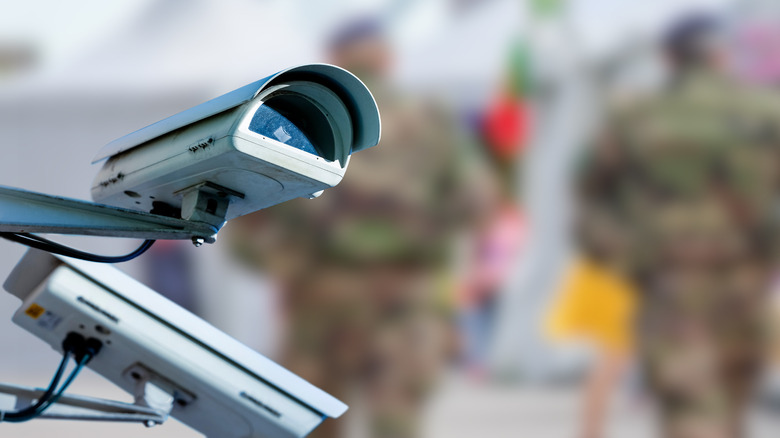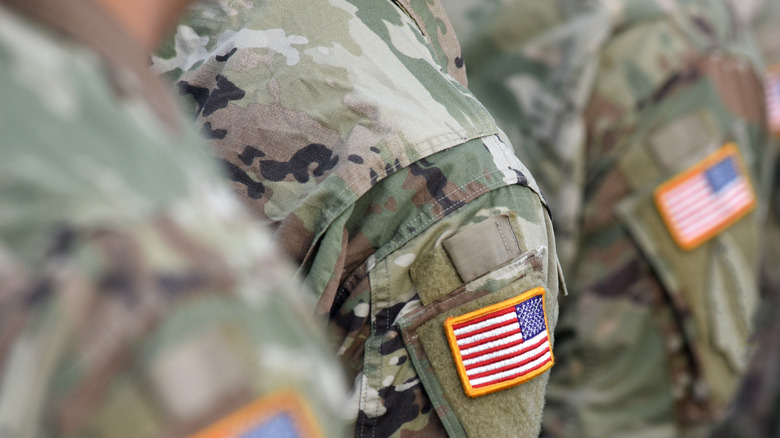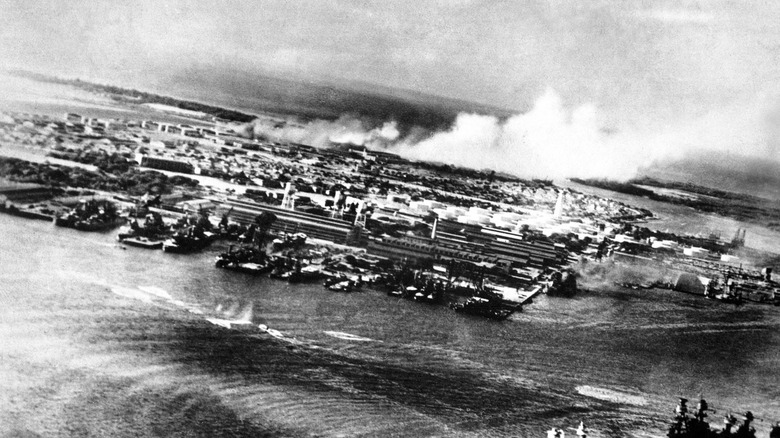Here's What Would Happen If The US Declared Martial Law
It almost doesn't matter who's president, who's in control of Congress, or who's sitting on the Supreme Court: There's always at least one person holding up a sign on a street corner somewhere, yelling about how the president, or someone else, is plotting to end democracy and enact martial law. Wow, the end of democracy? Martial law? It sounds scary — and yet it hasn't happened. Yet. Mostly. Sort of.
While nationwide martial law has never been declared in the U.S., historians have identified about 68 instances of martial law being declared regionally throughout the nation's history, according to the Brennan Center. Many of these have been both fairly temporary, fairly localized, and fairly limited in scope. But let's just say, for the sake of argument, that the guy on the street corner is right, and that the president (or whoever) is secretly plotting to declare nationwide martial law. What would that look like? What would happen? The answer is considerably more complicated than you might expect.
What does 'martial law' even mean?
The problem with talking about nationwide "martial law" is that, legally, "martial law" basically doesn't exist. As the Brennan Center points out, the U.S. Constitution makes no mention of martial law, and doesn't give the president — or, for that matter, anyone else — the authority to enact it. Neither Congress nor the Supreme Court is any more help here: Congress has never passed a law defining the U.S. government's martial law powers, and the Supreme Court has never issued a ruling on whether or not the federal government has the power to enact it (though it has supported the right of states to do so). With no working legal definition of "martial law," it's hard to talk about what has happened under martial law, let alone what would happen in hypothetical scenarios.
Something like "martial law" has occurred dozens of times, but if you look at the various instances, it's kind of a patchwork quilt of differing scenarios. Sometimes governors have declared it; sometimes state legislatures; sometimes Congress or the president; sometimes military generals. Sometimes the words "martial law" have been meant literally, in the sense that the military, as opposed to the civilian government, was in charge of everything now. Sometimes it's had the looser meaning of "We're letting the National Guard patrol the streets." Sometimes it's been during literal war, and sometimes it's been to quell (often peaceful) labor strikes.
A case study: martial law in post–Pearl Harbor Hawaii
Okay, but martial law has happened, right? It has, but the most recent instance of federal martial law was in Hawaii following the Pearl Harbor attacks of 1941. According to History, the martial law enacted there was quite literal: the U.S. military commandeered the entire government, suspending the legislature and all jury trials. There was a tight curfew imposed, habeas corpus was suspended, and anyone deemed "suspicious" was rounded up and imprisoned — more than 2,000 people in the first 48 hours. Everyone in Hawaii was fingerprinted and given identification papers they were required to produce on demand. The military seized all industry and enacted strict economic regulations (via CriminalDefenseLawyer). Things got particularly bad for Japanese-Hawaiians (about a third of the island's population), who were forbidden from gathering groups or speaking their native language. The whole nightmarish scenario lasted three years.
It's worth noting that Hawaii was a federal territory, not a state, at the time, and that several Supreme Court cases ruled that the federal government had overstepped its authority there. So it's not entirely clear that something this horrific is likely to happen again anytime soon. Still, it's clear that it can.


